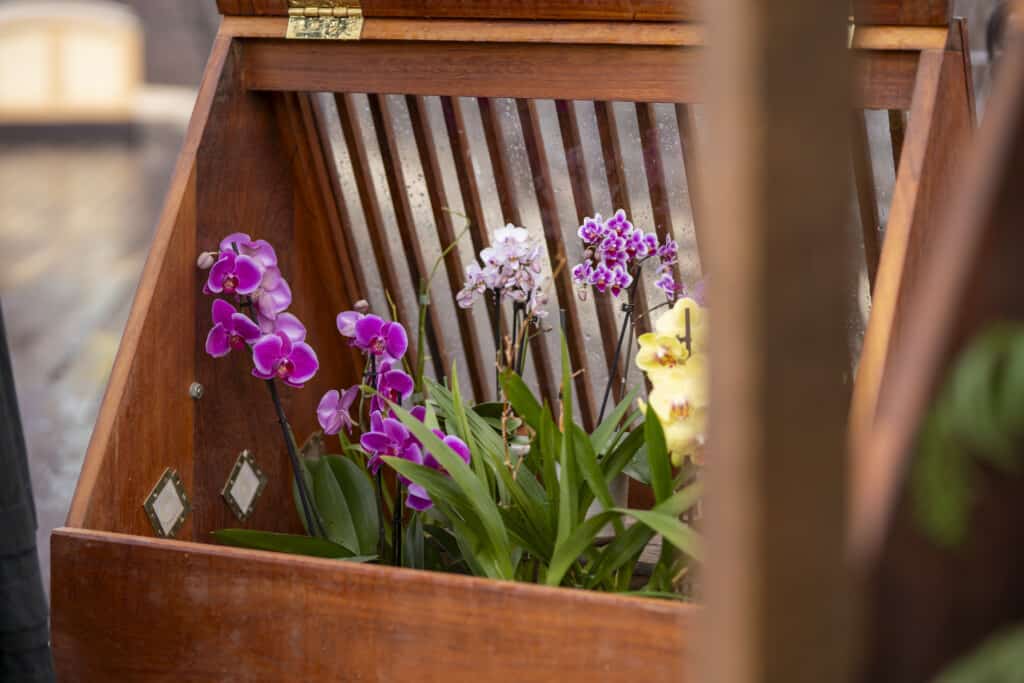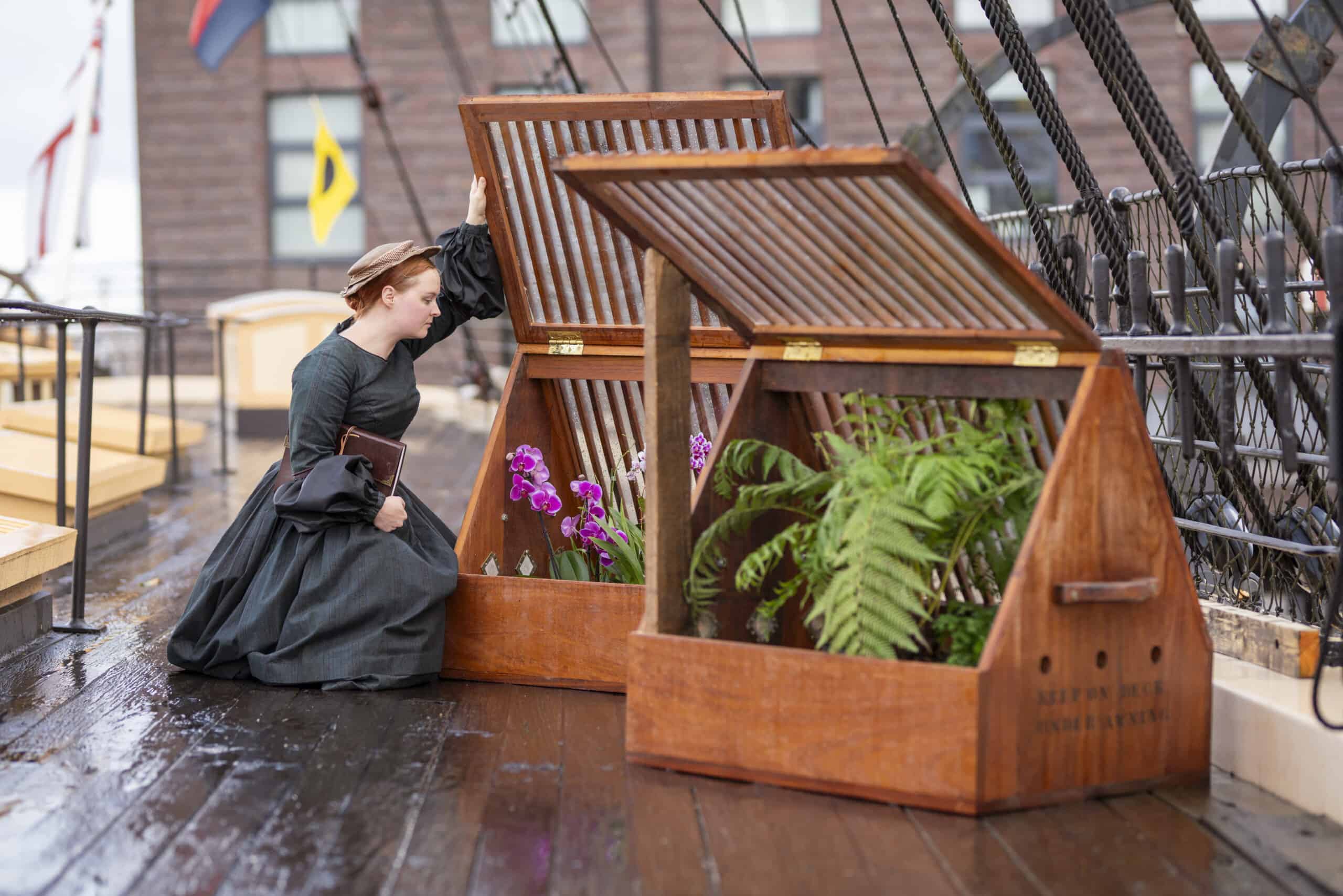The Wardian cases were so efficient that the plants inside them only needed to be watered ONCE on a 6 to 9 week voyage to or from Australia! Fresh water was rationed on ships like the SS Great Britain. Watering the plants less often reduced costs and was time effective.
The case itself takes its name from its inventor Nathaniel Bagshaw Ward, a London physician with a keen interest in the natural world. His proposal was a sealed system in which transpiration (the process of water movement through a plant) inside the case provides sufficient moisture to keep plants alive for extended periods. This system is termed a ‘terrarium’ today.
Before the Wardian case, many plants were transported globally as seeds. At their destination, nurserymen would cultivate the seeds and attempt to grow them in a new climate, which could be temperamental. Most live plants would die at sea before reaching their destination. The invention of the Wardian case boosted the survival rate of live specimens, acting as a catalyst for the global migration of plants.







